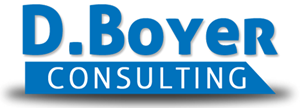Business is mostly conducted via email or phone communications.
Office hours 10:00 a.m. to 6:00 p.m, Mon. - Thurs., and 10:00 a.m. to 2:00 p.m. on Fridays.
SEND EMAIL INQUIRIES DIRECTLY TO:
Dawn.Boyer@me.com
Business is mostly conducted via email or phone communications.
Office hours 10:00 a.m. to 6:00 p.m, Mon. - Thurs., and 10:00 a.m. to 2:00 p.m. on Fridays.
SEND EMAIL INQUIRIES DIRECTLY TO:
Dawn.Boyer@me.com
Business is mostly conducted via email or phone communications.
Office hours 10:00 a.m. to 6:00 p.m, Mon. - Thurs., and 10:00 a.m. to 2:00 p.m. on Fridays.
SEND EMAIL INQUIRIES DIRECTLY TO:
Dawn.Boyer@me.com
Getting through the ‘The Great Resignation’ and ‘Quiet Quitting’: Career Cushioning
January 3rd, 2023 by Dawn Boyer
The pandemic-kick started Great Resignation is quitting work because the benefits or pay stinks, work hours are too stringent, a toxic environment, or all three. A 2022 survey indicated 81,000 technical workers were laid off that year, including Amazon, Meta, Door-Dash, and H&M. Quiet Quitting, is only performing minimum required work, not volunteering for extra tasking, or complying strictly with hours scheduled with no overtime.
A new term is hitting the employment sector. “Career Cushioning” is what careerists should do while contemplating leaving a company. Career Cushioning is something everyone needs to do – regardless of whether you are quiet quitting, actively resigning, or contemplating a career change.
Workers need to create a contingency plan. What if the new CEO terminates 75% of the workforce? What if the retail store converts all the registers to self-checkout? What if fast-food restaurants convert to order kiosks? Employment cycles have peaks and valleys; no worker is safe from being cut from the workforce. Marketplace demands unique tasking will favor those with advanced or diverse skills. What does a worker need to do to ‘build a safety cushion’ for their income and livelihood? The following are vital goals workers should target to protect income and ensure their skills are in demand:
- Conduct a SWOT analysis of work skills and career – what skills are you Strong in, Weak In, what Opportunities can you take advantage of, and what Threats do you need to alleviate? Do you need to hire a career coach to walk you through mock interviews, protocols, and practice conversations?
- Research your position to find out what compensation the competition is offering. Is your salary above or below the competition? If lower, shop for a new job with the competitor. If higher, find tasks and projects to make you ‘hard to replace.’ Put more effort into earning bonuses, pay increases, and promotions; strive to be irreplaceable.
- Get your resume regularly updated – just like an annual flu shot – it is ‘preventive maintenance’ for your career. What are trends highlighted in trade journals or industries to which you need to pay attention? Test the market by looking for jobs, take notes on the ‘required’ skills and experience, then rewrite your resume to show experience in as many of the required standards. Start practicing applying for jobs.
- Gain new transferable skills. LinkedIn has free training classes (find the nine matrix box link over the “Work” tab), offering hundreds of free courses. A LinkedIn study found more than 40% of company recruiters search for jobs based on skills rather than credentials. Find an adult education office (check the local library for schedules), and take bookkeeping or accounting, Microsoft Office, or QuickBooks classes to enhance your skills portfolio.
- Pursue a secondary source of income. This could include multi-level marketing (e.g., Avon), a second part-time job, a hobby (e.g., coaching or craft items sold via online stores), renovating a rental home (or renting that extra bedroom) for income, or guiding tours on weekends. Put all the secondary income stream into savings for that potential ‘rainy day.’ The second job will help stretch your finances if you lose your primary job.
- Keep network connections ‘warm’ – remember that reciprocity is king. Culture this investment constantly – not just when you need a favor. In a past survey, 65% of job seekers noted they gained their job through networking. Check with contacts monthly with a quick phone call, “Hello, keeping in touch; anything you need I can help you with?” (So you can ask for a favor in the future.) If the contact doesn’t answer the phone, leave a short message wishing them a great day. When you need the return favor, call and simply mention you are “open to new career roles; have they heard anything in their grapevine?”
- LinkedIn has an ‘open to work’ toggle on personal profiles. Ensure that option is toggled on so recruiters (with paid subscriptions) can see the ‘flag.’ Ensure your LinkedIn profile is ‘fat’ – the job descriptions are fully loaded, 50 skill sets listed, groups joined, and your resume is attached to the profile. Don’t forget to ask your connections for referrals on your profile – those are golden!
Holding a steady job is becoming less common for the workforce in general. A growing economy segment relies on freelancers, temp agencies, and gig labor. Companies are less reluctant to let workers go when profits suffer. Plan ahead and develop that Career Cushion for ‘getting off the exit ramp’ so you won’t come to a dead-end street.
Dawn Boyer, Ph.D., owner of D. Boyer Consulting – provides resume writing, editing, publishing, and print-on-demand consulting. Reach her at: Dawn.Boyer@me.com or visit her website at www.dboyerconsulting.com.
Readers Comments
Getting through the ‘The Great Resignation’ and ‘Quiet Quitting’: Career Cushioning
January 3rd, 2023 by Dawn Boyer
The pandemic-kick started Great Resignation is quitting work because the benefits or pay stinks, work hours are too stringent, a toxic environment, or all three. A 2022 survey indicated 81,000 technical workers were laid off that year, including Amazon, Meta, Door-Dash, and H&M. Quiet Quitting, is only performing minimum required work, not volunteering for extra tasking, or complying strictly with hours scheduled with no overtime.
A new term is hitting the employment sector. “Career Cushioning” is what careerists should do while contemplating leaving a company. Career Cushioning is something everyone needs to do – regardless of whether you are quiet quitting, actively resigning, or contemplating a career change.
Workers need to create a contingency plan. What if the new CEO terminates 75% of the workforce? What if the retail store converts all the registers to self-checkout? What if fast-food restaurants convert to order kiosks? Employment cycles have peaks and valleys; no worker is safe from being cut from the workforce. Marketplace demands unique tasking will favor those with advanced or diverse skills. What does a worker need to do to ‘build a safety cushion’ for their income and livelihood? The following are vital goals workers should target to protect income and ensure their skills are in demand:
- Conduct a SWOT analysis of work skills and career – what skills are you Strong in, Weak In, what Opportunities can you take advantage of, and what Threats do you need to alleviate? Do you need to hire a career coach to walk you through mock interviews, protocols, and practice conversations?
- Research your position to find out what compensation the competition is offering. Is your salary above or below the competition? If lower, shop for a new job with the competitor. If higher, find tasks and projects to make you ‘hard to replace.’ Put more effort into earning bonuses, pay increases, and promotions; strive to be irreplaceable.
- Get your resume regularly updated – just like an annual flu shot – it is ‘preventive maintenance’ for your career. What are trends highlighted in trade journals or industries to which you need to pay attention? Test the market by looking for jobs, take notes on the ‘required’ skills and experience, then rewrite your resume to show experience in as many of the required standards. Start practicing applying for jobs.
- Gain new transferable skills. LinkedIn has free training classes (find the nine matrix box link over the “Work” tab), offering hundreds of free courses. A LinkedIn study found more than 40% of company recruiters search for jobs based on skills rather than credentials. Find an adult education office (check the local library for schedules), and take bookkeeping or accounting, Microsoft Office, or QuickBooks classes to enhance your skills portfolio.
- Pursue a secondary source of income. This could include multi-level marketing (e.g., Avon), a second part-time job, a hobby (e.g., coaching or craft items sold via online stores), renovating a rental home (or renting that extra bedroom) for income, or guiding tours on weekends. Put all the secondary income stream into savings for that potential ‘rainy day.’ The second job will help stretch your finances if you lose your primary job.
- Keep network connections ‘warm’ – remember that reciprocity is king. Culture this investment constantly – not just when you need a favor. In a past survey, 65% of job seekers noted they gained their job through networking. Check with contacts monthly with a quick phone call, “Hello, keeping in touch; anything you need I can help you with?” (So you can ask for a favor in the future.) If the contact doesn’t answer the phone, leave a short message wishing them a great day. When you need the return favor, call and simply mention you are “open to new career roles; have they heard anything in their grapevine?”
- LinkedIn has an ‘open to work’ toggle on personal profiles. Ensure that option is toggled on so recruiters (with paid subscriptions) can see the ‘flag.’ Ensure your LinkedIn profile is ‘fat’ – the job descriptions are fully loaded, 50 skill sets listed, groups joined, and your resume is attached to the profile. Don’t forget to ask your connections for referrals on your profile – those are golden!
Holding a steady job is becoming less common for the workforce in general. A growing economy segment relies on freelancers, temp agencies, and gig labor. Companies are less reluctant to let workers go when profits suffer. Plan ahead and develop that Career Cushion for ‘getting off the exit ramp’ so you won’t come to a dead-end street.
Dawn Boyer, Ph.D., owner of D. Boyer Consulting – provides resume writing, editing, publishing, and print-on-demand consulting. Reach her at: Dawn.Boyer@me.com or visit her website at www.dboyerconsulting.com.














